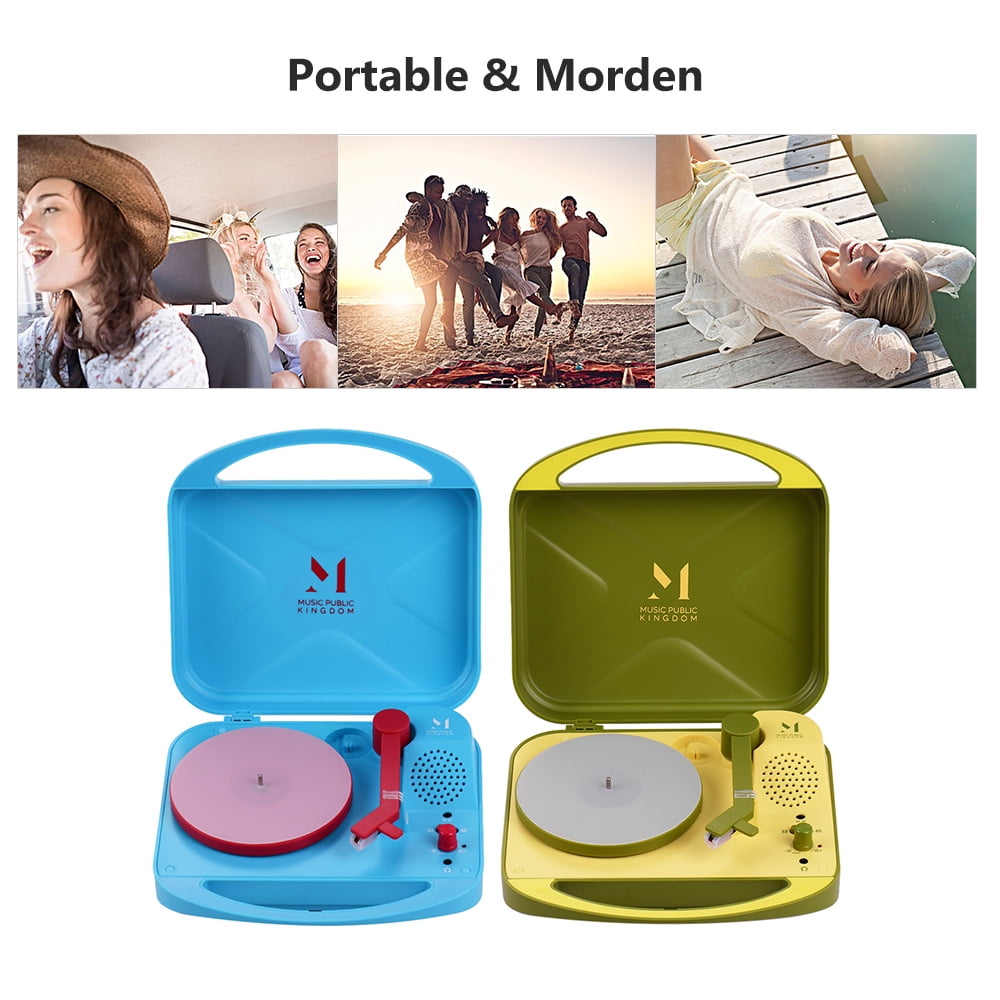
And this brings us to the mystery of the hole. RCA was also an electronics manufacturer.

But RCA thought this was a fine trade-off. This does come with a caveat: there’s 35 per cent less space available for music. However, RCA discovered that if it spun a disc at 45 RPM, there was a 35 per cent increase in groove velocity, which greatly reduces the loss of high frequencies and distortion. This is a major reason why the best songs and the best singles on an album are sequenced toward the outer edge of the disc. The result is an increase in distortion and a loss of high frequencies the closer you get to the middle. But as it spirals towards the centre, more and more information has to be stored per groove per rotation. If it is on the outer edge of the record, it has much longer to go per rotation.

Yes, the platter is still turning at 33 1/3 times a minute (1.8 times per second) but the relative speed of the stylus is different depending on where it is on the disc. We have to look at geometry again and the curvature of the grooves of a record.Īs the stylus gets closer to the middle of a record, the curvature of the grooves increases and its relative speed slows down. Why that speed? Let me stop you if you deduced that 78 minus 33 equals 45. READ MORE: Ozzy Osbourne admitted to hospital with flu ‘complications’ The solution was to come up with yet another vinyl format that was seven inches in diameter and spun at 45 RPM. Besides, RCA reasoned, people have been happy with records featuring one song per side for 50 years.
#7 inch single record 33 rpm license
RCA was not pleased that Columbia had scooped it with RCA’s own technology and refused to license the 33 1/3 format for its releases. Doing the math (π x 33 1/3 x the outside diameter of the grooves + the inside diameter of the grooves ÷ 2) meant that Columbia could promise up to 24 minutes per side of one of their new “long-playing” records.

These “microgrooves” allowed for a much longer spiral: 1,600 feet. Not only did vinyl last much longer, but the grooves could also be placed much, much closer together and played with a stylus that was tinier and far sharper. Vinyl was much more durable than the shellac-based compounds used with 78s. RCA’s rival, Columbia Records, picked up on the technology as they were experimenting with a new plastic substance called polyvinyl chloride - vinyl for short - which had gone into use in the 1920s for sewer pipes. So in an extremely silly move, RCA let a bunch of patents associated with their 33 1/3 RPM disc expire.įast-forward to 1948. RCA tried to introduce the new records to the general public as an alternative to the 78, but it was the Great Depression and the entire recorded music industry saw a sales collapse of 95 per cent through 19. People were not in the mood for a new recorded music format. READ MORE: Bow Wow’s girlfriend details alleged abuse in 911 call That gives us a rotational speed of 33.33 RPM. To make the audio last the same 11 minutes, the math dictated that the motor be geared down to 108:1. To match up the film with sound, a company called Vitaphone introduced a system that used a standard 3600 RPM motor to rotate a soundtrack disc. Based on the speed that film was fed through a project, each reel provided 11 minutes of viewing. Motion pictures came on standard reels featuring 1,000 feet of film. In 1931, RCA introduced a new type of 12-inch record just as movies with sound were spreading around the world. Not good if you want to listen to an entire symphony with no interruptions. That works out to about four minutes of music. how tightly packed they could be cut) and the rotational speed, the maximum length of the spiral groove that stored the music was restricted to 270 feet. The downside of the 78 was that based on its diameter (10 inches), number of grooves per inch (i.e. Most turntables sold today can accommodate records that rotate at two speeds: 33 1/3 RPM for albums and 45 RPM for 7-inch singles. Why do records turn at the speeds they do? With more people getting into the format for the first time and with lapsed fanatics picking up where they left off a couple of decades ago, some people have questions about some of vinyl’s eccentricities. Add all that together and the total number of vinyl sales in Canada in 2018 probably exceeded 1.6 million.

And that number doesn’t include sales through many independent stores, used records, purchases made at record shows or online from sites like eBay and Discogs, and anything an artist may sell off the merch table at the end of a show. Send this page to someone via email emailĪccording to Nielsen SoundScan, more than a million brand new vinyl LPs were sold in Canada last year, up a healthy 27 per cent from 2017.


 0 kommentar(er)
0 kommentar(er)
